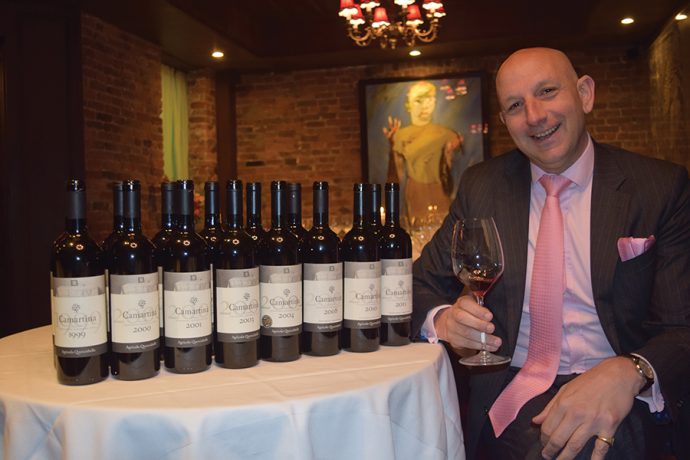In more or less the geographic center of Italy, in the heart of Tuscany, Sebastiano Cossia Castiglioni is spurring grape and wine production with an environmental passion that is helping to change the industry worldwide.
Querciabella was founded in 1974 by his father, Giuseppe. Sebastiano took the reins in 1988 and has migrated the winery to full-certified organic and biodynamic production. In 2010, they implemented a completely plant-based approach to biodynamics, making wines suitable for vegans (given that animal byproducts are sometimes used in the winemaking process). With 183 acres of prime Chianti Classico vineyards along with 79 acres of vines toward the western coast of Tuscany overlooking the Tyrrhenian Sea, Querciabella makes several wines, both red and white, in many price ranges.
I visited the Chianti Classico region several years ago and then went to the Maremma in western Tuscany a couple of years later. At the time I was struck by the amount of biodiversity, sustainability and organic production of grapes and winemaking that was being embraced and enthusiastically employed by a certain majority of producers. But Sebastiano Cossia Castiglioni has taken this to a new plane. Querciabella vineyards are alive and thriving. There are multiple crops planted between the grape rows, which encourages pollinating insects, birds and other beneficial creatures to make their homes nearby. These living and breathing vineyards not only provide sustenance for much fauna, they also make better fruit, and with better, in-balance soils encouraging deep rooting so they are able to tolerate extreme weather anomalies better than traditional vineyards.
Super Tuscan wines are often made from noble grapes, such as Cabernet Sauvignon, Cabernet Franc and Merlot not allowed by the Italian DOC and DOCG governing wine councils, which ensure only allowed grapes are used and are from the specific area. Super Tuscan producers wanted to use other nonpermitted grapes from the region, so another quality control agency was formed called the Indicazione Geografica Tipica or IGT. There are many producers of Super Tuscan wines. Ornellaia, Sassicaia, Tignanello, Solaia, Masseto, Vigorello and Querciabella are a notable collection of such producers.
I recently dined with Querciabella export manager Giorgio Fragiacomo in a private room at Carbone restaurant in Manhattan. The food was creative and wonderful but we were there to taste through eight vintages of Querciabella’s flagship wine, Camartina, spanning 12 years. Giorgio told me, “Wine is an integral part of our culture. We want to make a world-class wine that can compete with the best of France and other countries.” He continued, “Camartina is not made every year. Everything has to fall into perfect synchronicity to create perfect fruit to make this wine.” Typically, these wines are mature and ready for consumption four to seven years postharvest. And they will remain lovely and at a happy place and will improve for at least 18 years postharvest.
We started off with the just-released 2011. This wine was still a baby but perfectly drinkable. Each vintage showed dark cherry elegance with varying degrees of black pepper and spice. Querciabella means “Beautiful Oak” in Italian and its judicious use of oak is subtle and beautiful. Camartina wines spend two years in oak — 20 percent in new and 80 percent in used French oak barrels. After bottling, the wine rests at least an additional six months, prior to release. The earlier vintages were about 70 percent Sangiovese and 30 percent Cabernet Sauvignon. Since 2004, the wines have become more Cabernet dominant. Each additional year in the bottle has been rewarded with additional smoothness, balanced spice and nuanced flavors. Giorgio said they look to create a “feminine wine with finesse.” Each subsequent, older vintage has shown a maturity and an integration of flavors that have been sublime.
In addition to the 2011, we tasted the ’10, the ’08, ’04, ‘03 (a difficult year), ’01, ’00 and ’99. My favorite was the 2000 vintage, which showed balance and round, hearty dark fruit, perfectly aged for optimum pleasure. The ’99 was also singing and lovely. These wines retail somewhere between $100 and $150. Some of the earlier vintages may be impossible to locate, but well-stocked stores may have some remaindered. Look for Querciabella in all their price points. You will be supporting a living winery that is supporting and enhancing our planet. And other wineries are watching it.
Write me at doug@dougpaulding.com.


